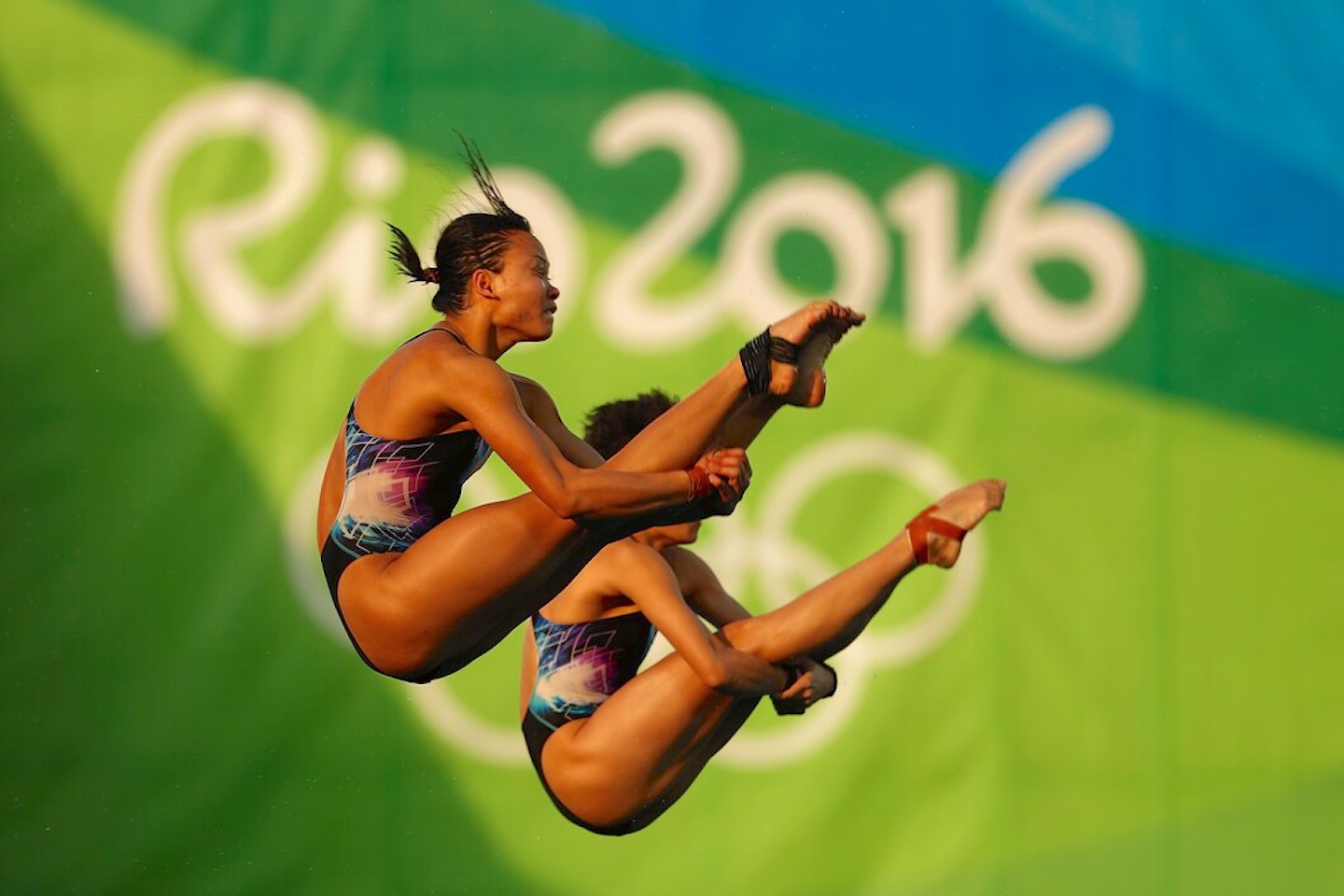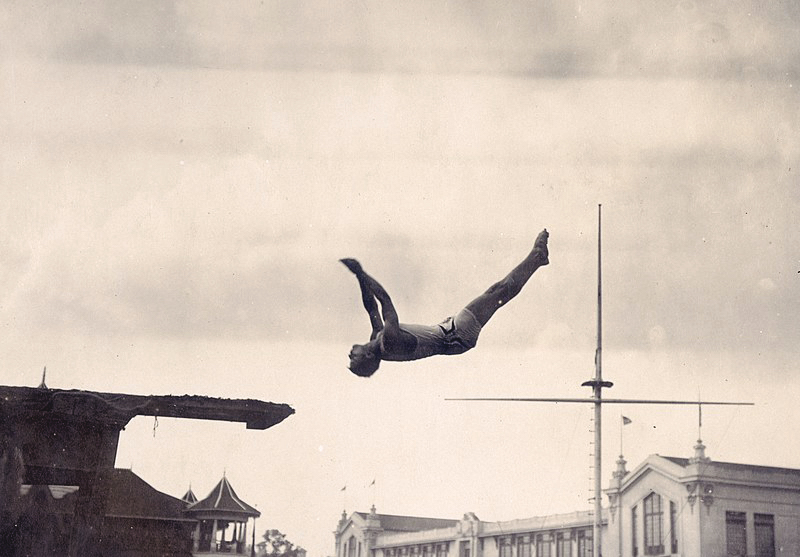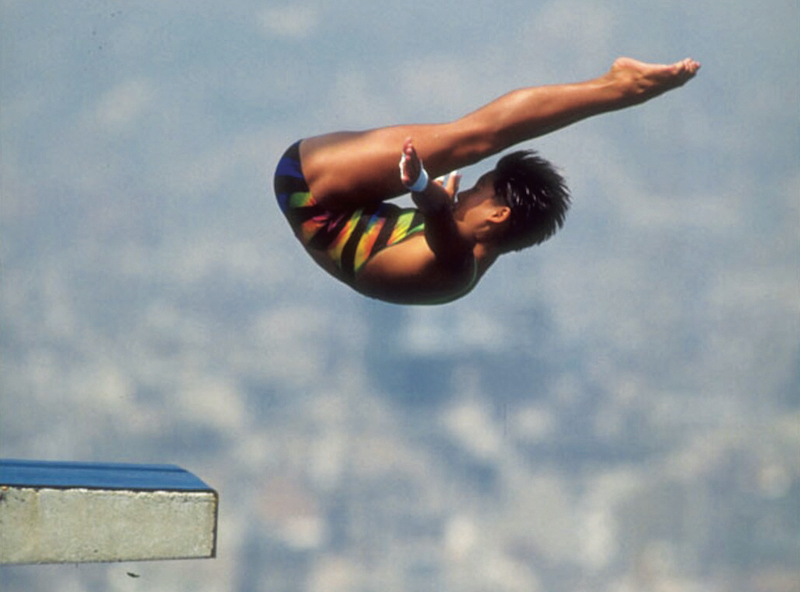
Diving — even at a modest height — can be a thrilling spectacle, requiring courage, athleticism and grace (All photos: Olympic)
Ever since early man first fancied a cooling dip in a Neolithic pool, diving has existed in some shape or form. The earliest notable portrayal of a diver and a platform was found in a burial vault south of Naples, Italy, circa 480BC. Throughout the ages, young men and women have diced with death in bravura challenges from lofty vantage points. But for all the heroics, Olympic recognition has been grudging.
When the International Olympic Committee (IOC) rejected high diving as a demonstration sport at the 2024 Games last December, it felt like ancient history was repeating itself. The Greek founding fathers never staged diving of any kind, which seems an awful waste when they had scribes such as Aristotle, Plato and Socrates sitting in the press box.
If the IOC decision was a blow for aquatic sports, it did nothing to lower Malaysia’s hopes of diving medals for a third Games in a row. If all goes ahead in Tokyo in July, the nation’s eyes will be focused on the platform and springboard versions.
Diving — even at a modest height — can be a thrilling spectacle, requiring courage, athleticism and grace, yet it still did not feature when the modern Olympics began in Athens in 1896. By then, it had become a popular pastime the world over and is, of course, how most swimming races start. But the Greeks still had not changed their philosophy.
Originally known as plunging, the sport had to wait another eight years to make its Olympic debut when St Louis (1904) staged what was dubbed “plain diving” from a 33ft (10.05m) platform. If this was entry level in every respect, elsewhere it was already evolving.
As often happens, a helping hand came from an unlikely source — the sport of gymnastics. Also seeking to go beyond the basics, gymnasts discovered that soft landings in water enabled them to experiment with new moves in mid-air. As well as adding to their own repertoire, they inspired what would soon become known as “fancy diving”. There were no PR companies in those days.
So, after a tentative take-off on its US debut, by the time the next Olympics was held in London in 1908, there was quite a leap. Fancy diving joined plain and plunging on the menu while wooden planks were replaced by a laminated or “elastic” springboard. The extra bounce would be the great enabler for the aerial acrobatics that were now in vogue.
All these added manoeuvres were vital for the sport to progress as “plunging” — to see who could go the farthest and deepest — and “plain diving” were never going to cut the mustard as spectator sports even in the pre-television era.
As leisure time grew in Europe and North America through the 19th century, people could not resist the urge to make a splash and waterfalls, bridges and piers were used as improvised platforms. This helped build an appetite to see it done in style.
But as a spectacle, even the “fancy” stuff could not compete with cliff diving. The earliest written history goes back to the 1770s when King Kahekili, a Hawaiian chief, leapt off a 19m cliff on the island of Lanai into the Pacific. He then tested the mettle of his warriors by ordering them to do likewise.
With up to three seconds of free fall — it is the closest we get to flying — the king duly earned the title, “birdman”. From half that height, the pool jumpers could not compare but in Stockholm four years later, the hosts showed their avion side with a graceful “Swedish swallow” dive that swooped all four golds.
After the Great War, the changes kept on coming. Body positions were the next to shift with straight, tuck and pike classed as separate dives at the Antwerp Games of 1920. Eventually, they merged into one as they are today. It was also when the balance of power swung to the USA who, taking advantage of their ever more flexible boards, won all six springboard gold medals.
The pre-war years were formative ones for diving. “Plain” and “fancy” were merged into high-board and that odd couple disappeared from the sport’s vocabulary. “Plunging” had been dropped after the London Games. Aided by constant refinements to technique and equipment, the Americans continued to dominate.
800px-alfred_braunschweiger_of_germany._fourth_place_in_the_fancy_diving_competition_at_the_1904_olympics_credit_wikimedia_commons.jpg

The year 1934 was significant on both sides of the Atlantic and for both the multi-disciplined pool version and its feral cousin. The opening of the Empire Pool at Wembley in London with its 10m stage, springboards and lift to the platform heralded a new era for the sport. In the meantime, in Acapulco, Mexico, a dare between two fishermen got things underway at perhaps the most celebrated cliff diving site on the planet.
Leaping off the crags of La Quebrada into the roiling waters of the Pacific Ocean 115ft (35m) below, local lads, who call themselves professionals, have entranced tourists ever since. With only the Virgin of Guadalupe — before whose shrine they pray prior to each dive — for protection, they stand on the edge of the abyss like an eagle poised for flight. The audience, scattered on boats below and perched on adjacent viewpoints, holds its breath.
For the divers, it is “look before you leap”. Staring down at that distant postage stamp of surf, they have to time their jump to catch an incoming wave. Get it wrong and they could crack their skull on the rocky bottom. When the moment arrives, they launch themselves beyond the cliff edge and down, headfirst and straight like a guided missile.
It takes the breath away and has wowed celebrities from former US president John F Kennedy to Johnny “Tarzan” Weissmuller to Frank Sinatra, helping turn Acapulco into the most fashionable resort on the Pacific coast in the 1950s and 1960s. Since then, drug gangs have given it a bad name and scared away tourists, threatening the divers’ livelihoods and an almost 90-year tradition.
But if a future Olympic Games is ever held in multiple venues around the globe — perhaps not so fanciful a notion post-pandemic — and cliff diving gets on the agenda, Acapulco would have to host the diving. It has its own series, sponsored by Red Bull, and its locations are some of the most gorgeous on Earth. But nowhere has done more to make plunging into the water from a great height more spectacular than this craggy corner of Mexico.
Cliff diving is a different and dangerous business but its daredevil nature and visual spectaculars have kept the Olympic version on its toes. As the sport has changed beyond recognition, dives that would not have been thought of half a century ago are now accomplished by 12-year-olds. And the spectacle has improved with it.
By 2000, synchronised diving was added to the Olympic agenda but beyond that, there are no less than 85 different high-board dives and 60 from the platform in the sport’s wider repertoire. Nope, diving is no longer plain.
Today’s divers do not defy gravity; they embrace it and to the non-expert viewer, there are perhaps two names that capture this in modern times. Appropriately enough, they come from the sport’s two most dominant nations. China’s Fu Mingxia and the US’ Greg Louganis have been among the most visually stunning performers in Olympic history. They have also provided some of its most memorable moments.
In 1992, in one of the most breathtaking Olympic scenes of all time, then 13-year-old Fu, clad in a costume of many colours, wet hair spiked back, is caught in mid-air with the city of Barcelona — the Gaudi masterpiece, the Sagrada Familia, and all — spread out behind her.
For his part, in 1984 and 1988, Louganis succeeded in achieving what his coach John Anders declared is the very essence of the sport: “… like poetry, it should always be flowing”. In barely a second, he managed to uncoil like a spring and float like a butterfly in a symphony of coordinated motion.
platform_diving_mingxia_fu_china_1992_fu_performs_one_of_her_dives_women_10m_platform.jpg

As for Malaysia, the country is known around the world for diving of a very different kind — underwater, with Sipadan, off the coast of Sabah, frequently ranked among the top 10 deep diving sites on the planet. On land, until recently, there was hardly a proper diving pool.
Indeed, for this country to win medals on the springboard in two successive Games is as unlikely a tale as the Jamaican bobsleigh team reaching the 1988 Winter Olympics. And the Jamaicans did not win a medal, although they did make it to the silver screen (Cool Runnings).
There was neither tradition nor desire and, in old Malaya, diving did not exist — at least in the minds of the Chinese Swimming Club in Penang. They built a pool in the sea for swimming and water polo, but not for diving. Back in the day, only Kuala Lumpur’s Weld Road pool had the right facilities and that became a supermarket.
According to Datuk Sieh Kok Chi, the country’s venerable doyen of the Olympics, “diving was just not promoted or developed at all until the 1990s and then only after Malaysia won the right to stage the 1998 Commonwealth Games”. There was just a lack of interest, no technical know-how and the cost was prohibitive. After the Melbourne Olympics in 1956, two US divers dropped by Kuala Lumpur but warned that the Chin Woo pool was not up to international standard.
What changed was the hosting of the world’s third largest multi-sport event and the immediate need for top-class facilities and a home team. This was when the government provided the funds and then National Sports Council chief Datuk Mazlan Ahmad established the proper structure for Malaysia to become a serious competitor in diving. Let’s hope it can continue to be in Tokyo and beyond.
This article first appeared on Mar 29, 2021 in The Edge Malaysia.


